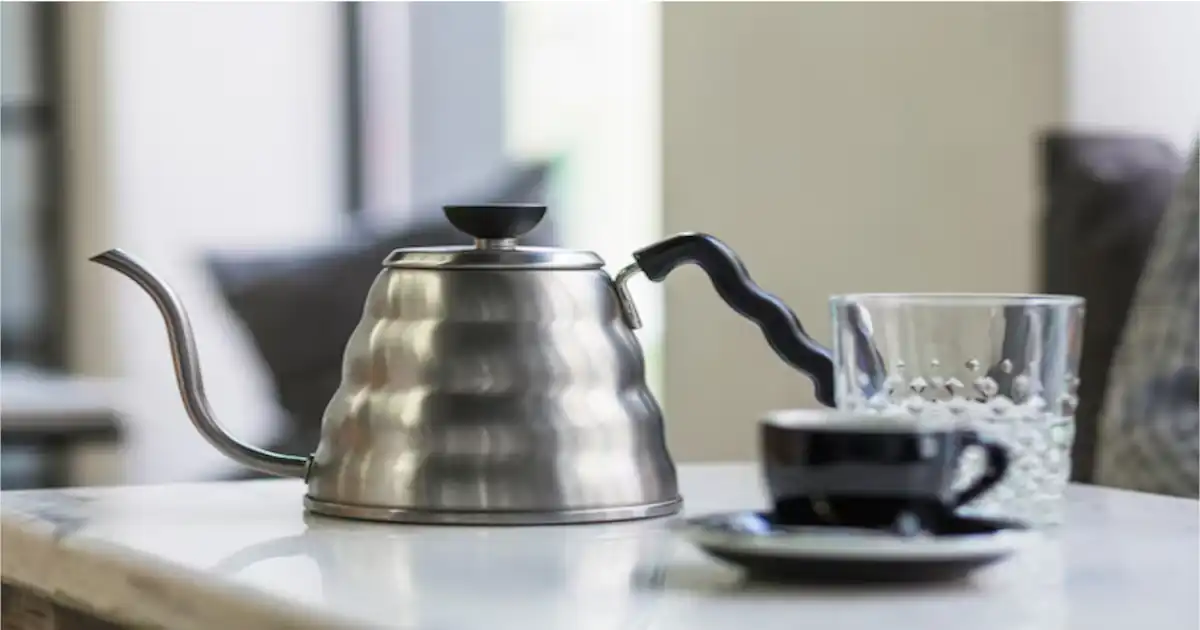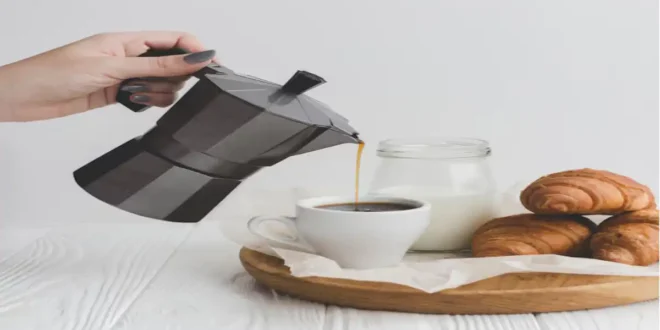Table of Contents
ToggleThe Ultimate Guide to Coffee Pots: Types, History, and Maintenance
Coffee, one of the world’s most popular beverages, has become a daily ritual for millions of people. But behind every great cup of coffee lies an important tool: the coffee pot. Whether it’s a modern electric coffee maker or a classic stovetop percolator, the coffee pot has been a central figure in kitchens around the world for centuries. In this article, we’ll explore the history, types, benefits, and evolution of coffee pots, offering a deep dive into why this simple kitchen tool has become such an indispensable part of our lives.
Introduction to the Coffee Pot
A coffee pot is a container used for brewing and serving coffee. Over time, the coffee pot has evolved from simple clay vessels to intricate brewing machines that allow for more precise control over the brewing process. It comes in various designs and operates through different mechanisms, depending on the brewing method you prefer.
But the coffee pot is not just a functional item; it’s a cultural symbol. It brings people together, serves as a focal point in homes and cafes, and offers a moment of peace during busy days. In fact, for many coffee lovers, the type of coffee pot they use is an integral part of their coffee experience, affecting not only the taste but also the ritual itself.
A Brief History of the Coffee Pot
The history of the coffee pot is closely linked to the history of coffee. Coffee’s origins trace back to Ethiopia, where it was first discovered in the 9th century. From there, the coffee plant made its way to the Arab world, and by the 15th century, it became a popular beverage in the Middle East.
The earliest coffee pots were simple. Coffee was brewed by boiling water and coffee grounds together in a pot. This method, known as Turkish coffee, is still popular in many parts of the world today. As coffee spread through Europe in the 16th and 17th centuries, so did the demand for specialized coffee pots.
In the 19th century, the percolator was invented, marking a significant change in coffee brewing methods. The percolator worked by cycling boiling water through coffee grounds using steam pressure, which created a stronger and more consistent brew. By the mid-20th century, electric drip coffee makers, which used disposable filters, became popular, offering an even more convenient way to brew coffee.
Today, coffee pots come in many different shapes, sizes, and functions, ranging from manual pour-over systems to fully automated machines.
Types of Coffee Pots
There are many different types of coffee pots, each with its own unique brewing method and impact on the flavor of the coffee. Below are the most common types of coffee pots available today:
1. Percolators
A percolator is a classic style of coffee pot that became widely popular in the 19th and 20th centuries. It works by boiling water in the lower chamber, which then travels up a tube and is dispersed over coffee grounds. This process repeats itself until the coffee reaches the desired strength.
Pros:
- Produces a strong, bold flavor.
- Durable and long-lasting.
Cons:
- Can over-extract coffee, making it bitter.
- Requires careful monitoring to avoid overheating.
2. Drip Coffee Makers
Drip coffee makers are perhaps the most widely used type of coffee pot in the world. They work by heating water in a reservoir and slowly dripping it over coffee grounds held in a filter. The brewed coffee then drips into a pot or carafe.

Pros:
- Convenient and easy to use.
- Consistent coffee brewing with minimal effort.
Cons:
- Limited control over brewing temperature.
- Can be wasteful with disposable filters.
3. French Press (Press Pot)
The French press, also known as a press pot, is one of the simplest and most effective ways to brew coffee. In this method, coffee grounds are steeped in hot water and then filtered through a plunger with a mesh screen.
Pros:
- Full control over brewing time and temperature.
- Rich, full-bodied coffee flavor.
Cons:
- More hands-on brewing process.
- Coffee grounds can sometimes slip through the mesh screen.
4. Moka Pot
The Moka pot is a stovetop coffee pot popular in Italy. It works by passing steam-pressurized water through coffee grounds. This method produces a strong, espresso-like coffee, making it a favorite among espresso lovers.
Pros:
- Affordable and compact.
- Produces strong, espresso-like coffee.
Cons:
- Requires more skill to avoid over-extraction.
- Cannot produce true espresso crema.
5. Pour-Over Coffee Makers
Pour-over coffee pots, such as the Chemex or Hario V60, involve manually pouring hot water over coffee grounds in a filter. This method allows for complete control over the brewing process, from water temperature to pouring technique.
Pros:
- Allows precise control over the brewing process.
- Produces clean, flavorful coffee.
Cons:
- Requires practice and patience.
- Time-consuming compared to electric brewers.
6. Espresso Machines
While technically not a “pot,” espresso machines are essential to the coffee-making world. These machines force pressurized hot water through finely-ground coffee, producing a small, concentrated shot of coffee known as espresso. Espresso machines can be manual, semi-automatic, or fully automatic.
Pros:
- Produces rich, concentrated coffee.
- Wide range of espresso-based drinks.
Cons:
- Expensive and requires regular maintenance.
- Takes time to master for manual and semi-automatic machines.
Choosing the Right Coffee Pot
Selecting the right coffee pot depends on a variety of factors, including your taste preferences, lifestyle, and budget. Here are some considerations to help you make the right choice:
- Flavor Preference:
- If you enjoy strong, bold coffee, consider a percolator, Moka pot, or espresso machine.
- If you prefer a clean, mild cup of coffee, a drip coffee maker or pour-over might be more suitable.
- Brewing Time:
- If you’re short on time, a drip coffee maker or single-serve machine like a Keurig might be the best choice.
- If you enjoy the brewing process and want to take your time, a pour-over or French press offers more hands-on control.
- Budget:
- Affordable options include the French press and Moka pot, while espresso machines and high-end pour-over systems can be more expensive.
- Durability and Maintenance:
- Stainless steel percolators and stovetop espresso makers are durable and long-lasting.
- Electric coffee makers require regular cleaning and maintenance to ensure optimal performance.
The Impact of the Coffee Pot on Culture
The coffee pot has played a significant role in shaping cultures around the world. In countries like Italy, the Moka pot is a symbol of tradition, and making coffee is an essential part of everyday life. In the United States, the rise of drip coffee makers in the 20th century mirrored the fast-paced, convenience-driven culture, with coffee becoming a quick and efficient way to start the day.
In many cultures, the coffee pot also serves as a symbol of hospitality. In Turkey and the Middle East, offering guests a cup of coffee brewed in a traditional coffee pot is a sign of respect and generosity. In Scandinavian countries, where coffee consumption is among the highest in the world, the coffee pot is a staple at social gatherings.
Sustainability and the Future of Coffee Pots
As environmental concerns grow, so does the demand for sustainable coffee brewing methods. Many people are moving away from single-use coffee pods and disposable filters in favor of reusable and eco-friendly options. French presses, pour-over systems with reusable filters, and stovetop espresso makers are all gaining popularity for their low environmental impact.
Moreover, innovations in coffee pot design are making brewing more energy-efficient. For example, smart coffee makers that can be programmed to brew coffee only when needed help reduce energy consumption. Meanwhile, manufacturers are using sustainable materials, like bamboo and recycled plastic, to make eco-friendly coffee pots.
How to Maintain Your Coffee Pot for Optimal Performance
Proper care and maintenance of your are crucial for ensuring its longevity and the quality of your brew. Here are some tips for keeping your coffee pot in top condition:
- Regular Cleaning:
- Clean your coffee pot after each use to prevent the buildup of coffee oils and residue, which can affect the flavor of your coffee.
- Descaling:
- If you use an electric coffee maker, descale it regularly to remove mineral buildup from hard water. Use a descaling solution or a mixture of water and vinegar.
- Use Fresh Water:
- Always use fresh, filtered water for brewing to improve the taste of your coffee and prevent mineral deposits in your coffee pot.
- Store Properly:
- Store your coffee pot in a dry, cool place to prevent rust and damage.
Conclusion
The coffee pot has come a long way from its humble beginnings as a simple vessel for boiling water and coffee grounds. Today, it offers a wide range of brewing options to suit every taste, lifestyle, and budget. Whether you prefer a classic percolator, a sleek espresso machine, or a manual pour-over system, the remains an essential tool in the art of coffee making.
As we move into an era of greater environmental consciousness, the future of lies in sustainability and innovation. From energy-efficient designs to reusable filters, are evolving to meet the demands of a more eco-friendly world. But no matter how technology changes, the coffee pot will always be at the heart of our coffee rituals, bringing comfort and connection to people everywhere.
Frequently Asked Questions (FAQs)
What are the different types of coffee pots available?
There are various types of coffee pots, including drip coffee makers, percolators, French presses, Moka pots, pour-over coffee makers, and espresso machines. Each type has a unique brewing method that influences the flavor and strength of the coffee. Your choice depends on your brewing preferences, convenience, and desired coffee strength.
How do I clean and maintain a coffee pot?
Proper cleaning and maintenance are essential for optimal performance. You should clean your after each use, ensuring there is no coffee residue left inside. For electric coffee makers, regular descaling is recommended to remove mineral buildup, especially if you’re using hard water. Stovetop coffee pots like the Moka pot or percolator should be cleaned and dried thoroughly to prevent rust.
Which coffee pot produces the best flavor?
The answer depends on personal taste. For those who enjoy a rich, full-bodied brew, a French press or Moka pot may be the best choice. A drip coffee maker provides a lighter, cleaner cup of coffee, while espresso machines produce concentrated shots for espresso lovers. If you prefer full control over the brewing process, a pour-over coffee maker may provide the most refined flavors.
Can using a coffee pot be eco-friendly?
Yes, certain coffee pots are more eco-friendly than others. For instance, French presses and pour-over systems with reusable filters reduce waste compared to single-use coffee pods or disposable paper filters. Stovetop like Moka pots are also more sustainable since they don’t require electricity or disposable parts.
What is the difference between a percolator and a drip coffee maker?
A percolator brews coffee by cycling boiling water through the coffee grounds multiple times, resulting in a stronger and sometimes more bitter brew. In contrast, a drip coffee maker passes hot water through the coffee grounds once, producing a lighter, more consistent flavor. Percolators tend to create a bolder taste, while drip machines offer convenience and ease.
How often should I descale my coffee pot?
The frequency of descaling depends on the hardness of your water and how often you use your coffee pot. Generally, it’s recommended to descale your every 1 to 3 months. Regular descaling helps prevent mineral buildup, ensuring that your coffee maker operates efficiently and your coffee tastes fresh.
READ ALSO: James An College: A Premier Institution for Academic Excellence
 Touch Blog
Touch Blog



